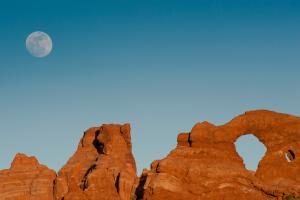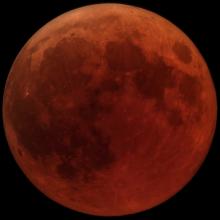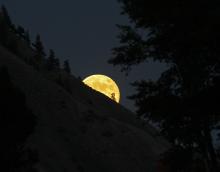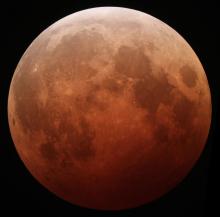An almost-full Moon rises behind Turret Arch, in Arches National Park, Utah. December's full Moon, on the night of the 11th, is known as the Long-Night Moon because it remains in the sky longer than any other full Moon of the year. [Neal Herbert/National Park Service]
You are here
Long-Night Moon
December’s full Moon is known by several names. One is the Cold Moon, while another is the Moon Before Yule — good descriptors of the time of year. And it has another name that’s every bit as obvious — but only when you think about it: the Long-Night Moon. It tells us that the Moon is in view for a longer period than any other full Moon of the entire year.
The moniker becomes obvious when you consider the full Moon is a mirror image of the Sun — offset by six months. So whatever the Sun does today, the Moon will copy six months later.
Around the time of the summer solstice, for example, the Sun is in view longer than at any other time of year. It climbs highest across the sky as well, and rises and sets farthest north. At that time, the full Moon is puny by comparison. Since it rises around sunset and sets around sunrise, it’s not in view for long. And it stays fairly low in the sky.
Now, though, less than two weeks before the winter solstice, it’s just the opposite. The Sun is in view for fewer hours, and it stays low in the sky. But the full Moon shines at its best. It rises early, sets late, and climbs highest across the sky.
From Miami, for example, 10 and a half hours of sunlight will be followed by 14 hours of moonlight — a difference of three and a half hours. From Kansas City, the difference is five and a half hours. And from Seattle, it’s seven and a half hours — providing plenty of moonlight for a cold night.
Script by Damond Benningfield
Get Premium Audio
Listen to today's episode of StarDate on the web the same day it airs in high-quality streaming audio without any extra ads or announcements. Choose a $8 one-month pass, or listen every day for a year for just $30.






